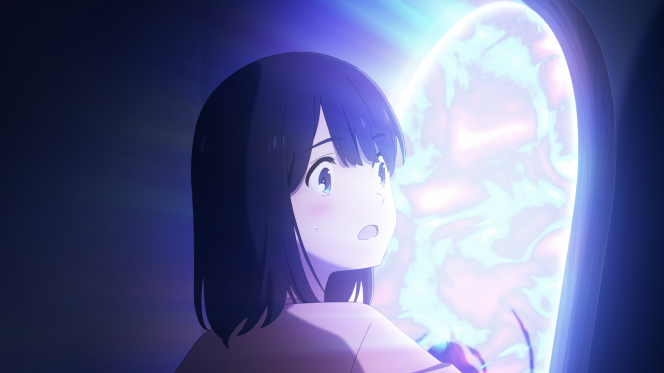THE OPINION OF THE “WORLD” – WHY NOT
Keiichi Hara, 64, brings a refined and sensitive voice to the heart of Japanese animation to which he has given, in sixteen years, after numerous commissioned works, a handful of remarkable works, including A summer with Coo (2007), Colorful (2010), and above all the splendid historical drama Miss Hokusai (2015), his most flamboyant achievement to date. Since then, this conscientious artist has not really transformed the essay: Wonderland. The kingdom without rain (2019) had marked a first retreat into the conventions of the genre. A tendency towards alignment which will not be contradicted by its last delivery, The Lonely Castle in the Mirrorwho prides himself on dressing a subject of society in the badly cut costume of a borrowed imagination.
Adapted from the best-selling novel of the same name (Milan, 2022) by Mizuki Tsujimura, the film places itself from the outset, and emphatically, under the auspices of the tale (Little Red Riding Hood is quoted from the opening). Kokoro, a withdrawn schoolgirl, has recently refused to set foot in class and spends her days at home, under the worried and nevertheless complacent gaze of her mother.
One day, the mirror in her room begins to glow with a curious reflection: the young girl crosses it and lands in the living room of a magic castle, erected in the middle of the waves, among six other students of her age. Their host, a strange girl in a wolf mask, presents them with an enigma: they have six months to unearth a key in the detours of the citadel, at the end of which the winner will have a wish granted. Not very diligent, the candidates first get to know each other, and realize that they were not chosen by chance: they no longer go to school.
Psychoanalytical escape game
The real subject is not long in revealing itself: it is school bullying, which the film, following Silent Voice (2016), by Naoko Yamada, gradually brings out a common crack in all of her characters. Keiichi Hara is thus part of a heavy trend in Japanese animation, used to raise awareness among adolescent audiences: that of the traumatic scenario where the imagination only occupies a resilient function – we can also see here a singular reduction of his powers.
More broadly, the problem of Lonely castle in the mirror, is that it does not mobilize any animation issue in itself: its plot, psychological, is above all on the discursive level, and is more about the dialogues than the images. Evidenced by the way the film underinvests the decor of the castle, almost unexplored, if not as a kind of psychoanalytical escape game, or life-size online game.
You have 17.95% of this article left to read. The following is for subscribers only.
